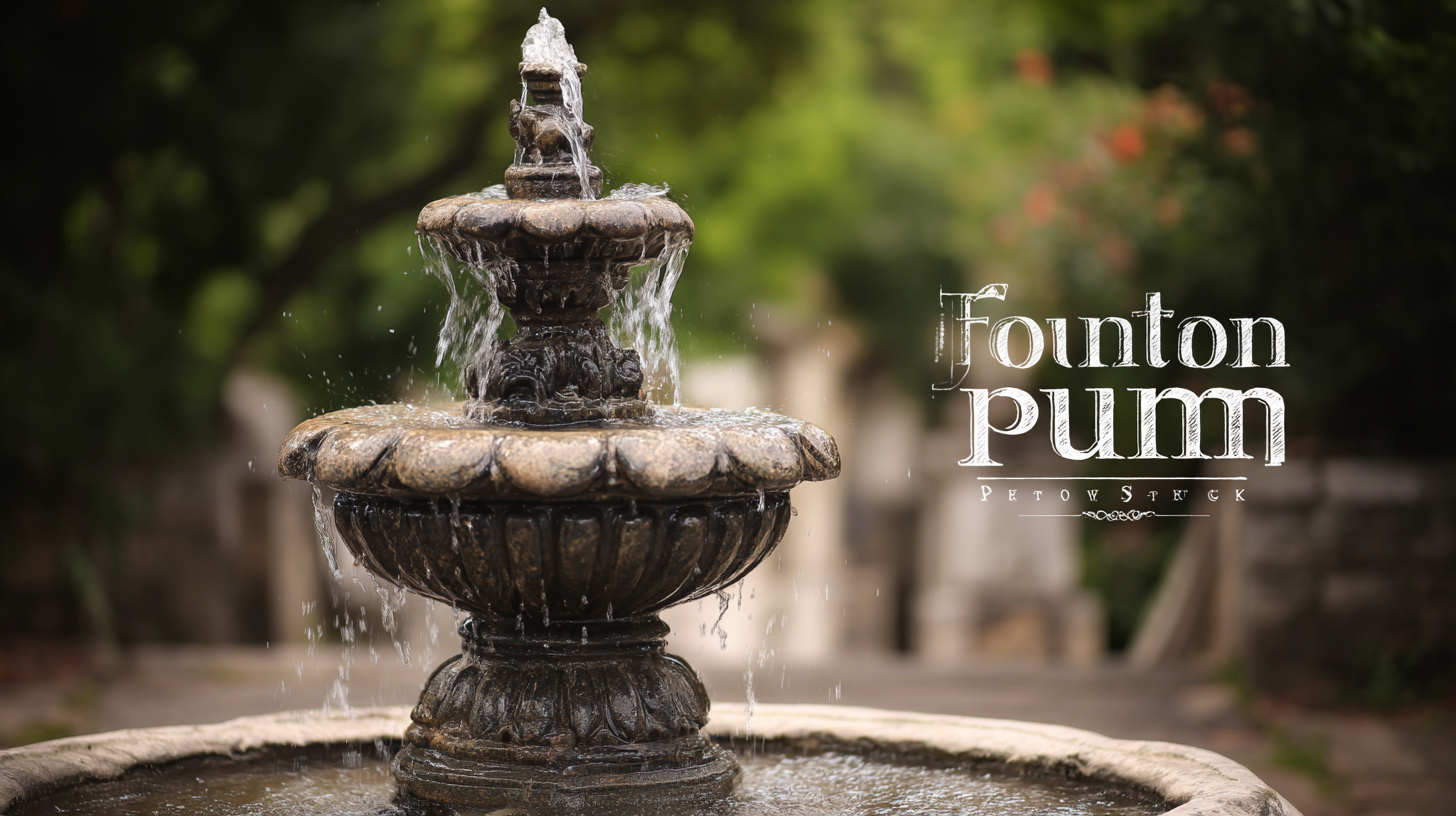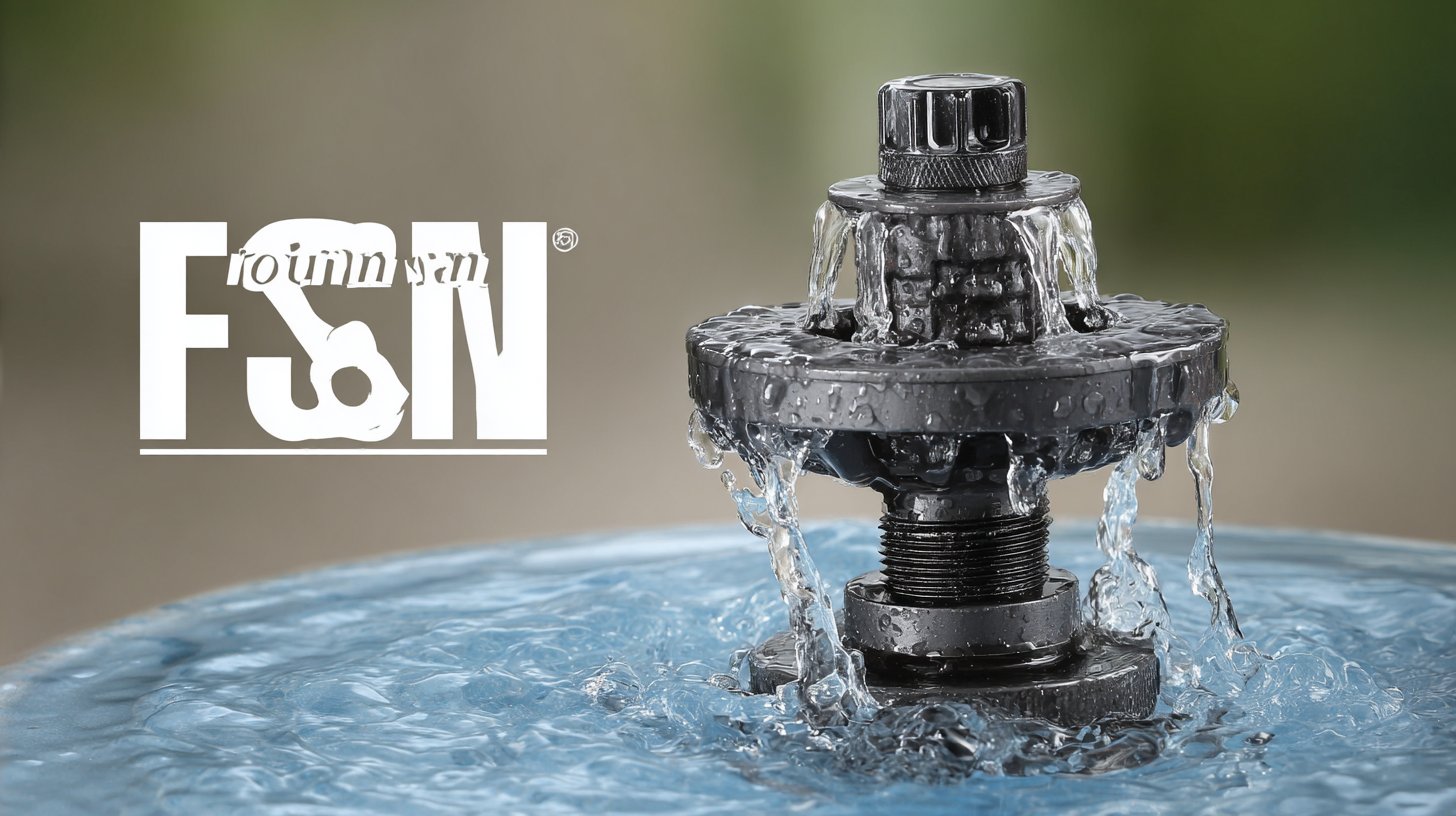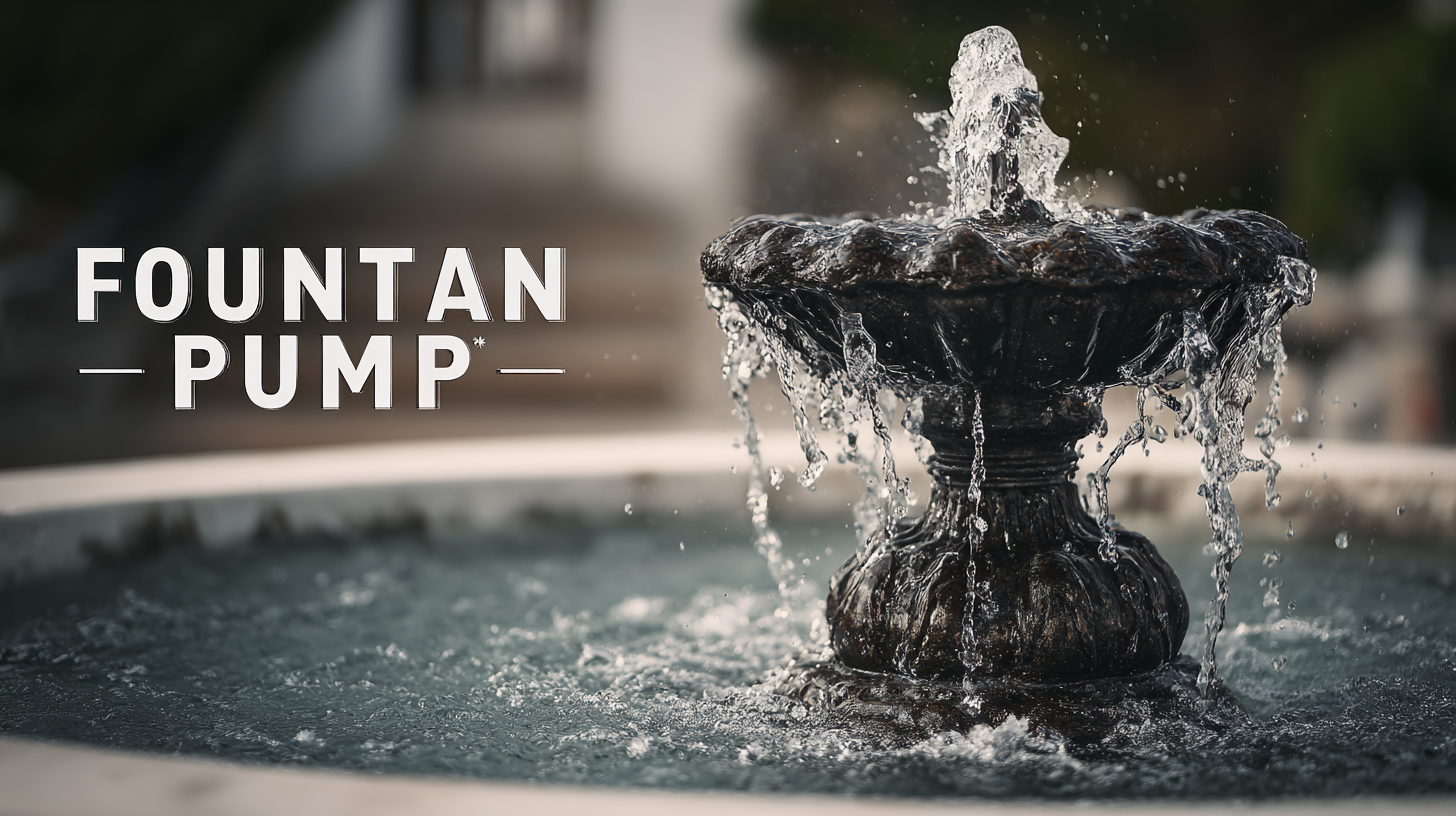
How to Choose the Best Fountain Pump for Your Outdoor Space
Creating a serene outdoor oasis often hinges on the perfect water feature, and at the heart of this tranquility lies the Fountain Pump. Choosing the best fountain pump for your outdoor space is essential for maintaining a beautiful and functional water display. Whether you're looking to enhance your garden, backyard, or patio, a well-selected fountain pump can elevate your environment, providing not only visual appeal but also soothing sounds of flowing water. With numerous options available in the market, it can be overwhelming to determine which pump will best suit your specific needs. This ultimate guide will walk you through the key factors to consider, from the pump's flow rate and power source to its durability and maintenance requirements, ensuring that your water feature remains a shining highlight of your outdoor space for years to come.

Understanding the Different Types of Fountain Pumps Available on the Market
When selecting a fountain pump for your outdoor space,
it's crucial to understand the different types available on the market. The primary categories
include submersible pumps,
external pumps, and
solar-powered pumps.
Submersible pumps operate underwater, making them ideal for
small to medium-sized fountains. They are known for their quiet operation and
ease of installation, as they can be placed directly in the water, eliminating the need
for complex plumbing.
 External pumps, on the other hand, are positioned outside the water feature and are typically used
for larger fountains or water features that require higher flow rates. These pumps are more powerful
and easier to access for maintenance, but they may be noisier than their submersible counterparts.
Solar-powered pumps provide an eco-friendly option, harnessing
solar energy to operate. They are perfect for smaller water features in sunny locations, but their
performance can be impacted by cloudy weather or limited sunlight.
Understanding these options will help you choose a pump that fits the needs of your outdoor
environment effectively.
External pumps, on the other hand, are positioned outside the water feature and are typically used
for larger fountains or water features that require higher flow rates. These pumps are more powerful
and easier to access for maintenance, but they may be noisier than their submersible counterparts.
Solar-powered pumps provide an eco-friendly option, harnessing
solar energy to operate. They are perfect for smaller water features in sunny locations, but their
performance can be impacted by cloudy weather or limited sunlight.
Understanding these options will help you choose a pump that fits the needs of your outdoor
environment effectively.
Key Features to Consider When Selecting a Fountain Pump for Your Garden
When selecting the best fountain pump for your garden, several key features must be considered to ensure optimal performance and longevity. First and foremost is the pump's flow rate, typically measured in gallons per hour (GPH). According to industry standards, the flow rate should ideally match the fountain's volume; for smaller features, a pump with a flow rate of 100-300 GPH is generally sufficient. For larger installations, you may need a pump that can deliver 600 GPH or more. This balance is vital not only for aesthetics but also for maintaining a healthy water environment, preventing stagnation and algae growth.
Another important feature to evaluate is the pump's power source. While electric pumps dominate the market due to their efficiency, solar-powered options are gaining traction, especially in eco-friendly gardens. A report by the National Gardening Association indicates that 45% of garden enthusiasts are now incorporating sustainable practices, including solar technology. Additionally, consider the pump's head height, which is the maximum vertical distance the pump can push water. For most garden fountains, a head height of 4-6 feet is sufficient. By focusing on these essential features, you can select a fountain pump that not only enhances your outdoor space but also functions effectively for years to come.
How to Choose the Best Fountain Pump for Your Outdoor Space - Key Features to Consider When Selecting a Fountain Pump for Your Garden
| Feature | Description | Importance |
|---|---|---|
| Flow Rate | The amount of water the pump can circulate per hour, measured in gallons or liters. | Critical for ensuring the desired fountain effect. |
| Pump Type | Submersible vs. Inline pumps, where submersible pumps are placed in the water. | Affects installation and maintenance requirements. |
| Power Source | Electric, solar, or battery-operated options are available. | Determines ongoing energy costs and suitability for the installation environment. |
| Noise Level | The sound produced by the pump when it is operational. | Important for maintaining a peaceful outdoor atmosphere. |
| Durability | Material quality and construction that can withstand outdoor conditions. | Ensures long-term functionality and reduces replacement frequency. |
| Size | The physical dimensions of the pump, impacting how it fits in your fountain. | Critical to ensure proper installation and aesthetic integration. |
How to Determine the Right Pump Size for Your Outdoor Fountain
When selecting the right pump size for your outdoor fountain, it’s important to consider several key factors that will ensure optimal performance and longevity. First, measure the height and width of your fountain to determine the required flow rate. Most fountains need a flow rate ranging from 150 to 300 gallons per hour (GPH), depending on their size. A general rule is that the pump should be able to circulate the entire volume of water in your fountain at least once every hour.
Here are some tips to help you make the right choice:
1. **Depth of the Fountain**: If your fountain is particularly deep, choose a pump that can easily reach the bottom while providing adequate water flow.
2. **Type of Fountain**: Different designs may require different pump styles. For example, solar pumps are energy-efficient and are perfect for areas with ample sunlight, while submersible pumps can operate in low light conditions.
3. **Noise Level**: Consider the noise produced by the pump. For a peaceful garden space, select a quieter pump option to maintain a tranquil atmosphere.
Selecting the right pump size not only enhances the beauty of your outdoor space but also benefits local wildlife, as water features attract birds and beneficial insects while providing hydration for pets.
Fountain Pump Size Guide
Energy Efficiency and Performance: Choosing Environmentally Friendly Pumps
When selecting a fountain pump for your outdoor space, it’s vital to prioritize energy efficiency and performance, especially given the emphasis on environmentally friendly options. Modern fountain pumps now come equipped with advanced technologies that maximize water circulation while minimizing energy consumption. Look for pumps that are rated for high energy efficiency, such as those certified by ENERGY STAR, which can drastically reduce your electricity bills while still delivering powerful water flow.
Additionally, consider the pump's design and materials. Opt for environmentally conscious options that not only conserve energy but also operate quietly and provide a consistent performance. Some pumps feature variable speed settings, allowing you to adjust the flow to suit different needs without wasting power. Choosing a pump made from durable, recycled materials can further enhance its ecological footprint, ensuring your outdoor fountain contributes positively to the environment. By focusing on these aspects, you can enjoy a beautiful and sustainable outdoor water feature that aligns with your eco-friendly values.
Maintenance Tips for Keeping Your Fountain Pump in Optimal Condition
When it comes to maintaining your fountain pump, regular upkeep is essential to ensure its longevity and optimal performance. One of the simplest yet most effective tips is to clean the pump regularly. This involves removing any debris, algae, or mineral build-up that can obstruct the water flow. A good practice is to inspect and clean the pump at least once a month, especially during the growing seasons.

Another important aspect of maintenance is monitoring the water level. Insufficient water can cause the pump to overheat and fail prematurely. Make it a routine to check the water level daily, especially during hot weather when evaporation occurs more rapidly. If the water level is low, refill it to avoid pump damage.
Finally, consider seasonal maintenance as well. In colder months, it’s crucial to winterize your fountain pump to prevent freezing and cracking. This means disconnecting the pump, draining it, and storing it in a safe, dry place until the warm weather returns. By following these tips, you can keep your fountain pump in top condition and enjoy your outdoor space to the fullest.
